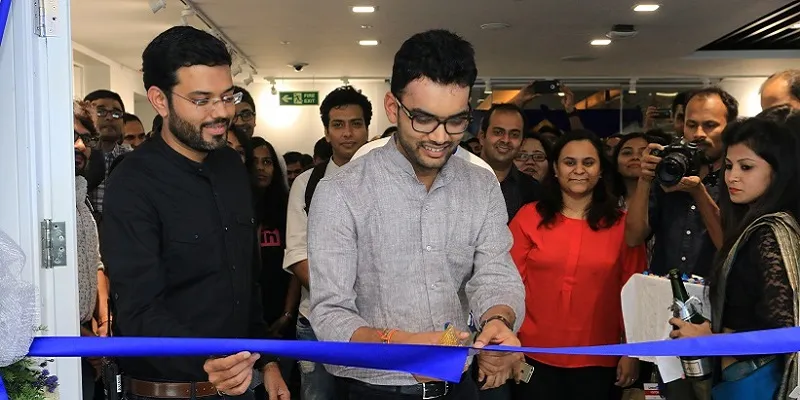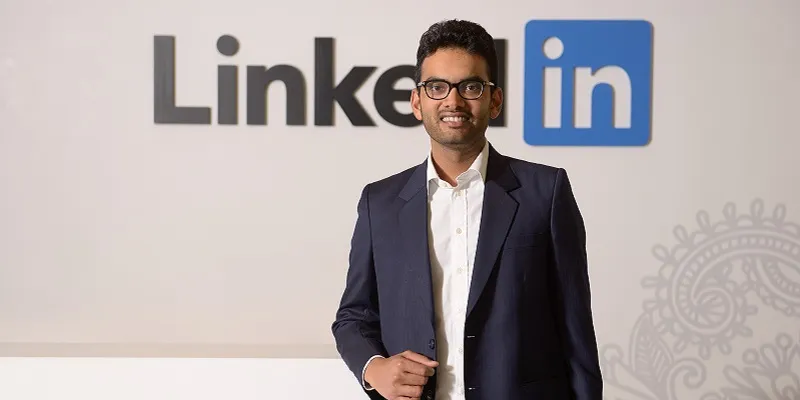LinkedIn India is aiming to build products from India for the globe
“I cannot start building a product unless I have met enough people on the field and understand how consumers operate," says Akshay Kothari, Country Manager and Product Head, LinkedIn India, on building India-specific LinkedIn products. It has been three and a half years since LinkedIn acquired Pulse. And Akshay, the Founder of Pulse, calls his journey “an educational few years.”
For Akshay, the move to India as the country manager for LinkendIn was unplanned. After move from Pulse and after setting it to scale, he wanted to do other things. Akshay possibly wanted to travel to India, but Jeff Weiner, LinkedIn’s CEO, had other plans. And soon, Akshay came to oversee the India office.
He says:
Very few acquisitions are able to achieve what you dream of when you sign those papers. Pulse had started as a class project that was built in six weeks. Now, it powers content recommendations for over 450 million people on the LinkedIn home page. We were acquired when Pulse had 30 million users.

14 years of existence, a market cap of $18.23 billion, and an acquisition by Microsoft for $196 per share in an all-cash transaction valued at $26.2 billion in June this year. Founded in 2002, LinkedIn is today one of the world’s largest professional networks, with over 433 million people on it. However, LinkedIn’s India story is slightly different.
It was started in 2009 as a sales office, when the platform had over 3 million users. And for three years, the India office continued to be nothing but a sales office, until in 2012, the team began to shift focus and build an engineering team. Akshay says:
We had realised that India had a strong technical and engineering talent, and we felt that we needed to invest and build a strong centre here. And in 2012, the country saw the makings of the first R&D centre outside of New York. At that time, San Francisco hadn’t started yet.

The beginnings of the India R&D centre
Akshay says that one of the engineering leaders from the US team moved to Bengaluru to build the centre.
“He grew the team to over 250 engineers and operations staff, and started to work on building platforms for global use,” says Akshay. All quality assurance, support, communication infrastructure, spam prevention, search verticals and backend infrastructure work began to take place out of the India office.
Today, LinkedIn India operates out of a 222,000 square foot office spread across three floors in Bellandur in Bengaluru, with India being the second largest market after the US for the networking platform. And Akshay believes that they still have a long way to go in terms of saturating the market.
Also, in the past six months, the India team has strongly focused on building products that are by India and for India. “If we have to create economic opportunity for all of the global workforce, we have to make sure that India works well for us,” says Akshay.

Understanding India
And the team saw that the Indian market is significantly different from that of the US. Whether it is job hunting, startups or connectivity, India is different. To understand the real India, the team went deeper into Tier II and III cities to understand how LinkedIn could optimise their business in these regions.
While metros have received considerable focus, the team realised that a large chunk of the population needed access to quality products. India is a very diverse country. They decided on four regions across the nation, and picked up and coming cities with a strong college networks. The idea was to be with them and understand how they operated and lived.
This attitude was strongly ingrained in Akshay from his Pulse journey. For the first six months, the team would sit in a café and study how people consumed news. He explains:
“The field trip for LinkedIn also helped bring in empathy and helped the team understand who they were actually building for. What we couldn’t do in nine months of pilot in a lab, we managed to do in three days after a field visit.”
Making for India
In terms of placements, the LinkedIn team saw that the way placements are done in India is very different. In campus placements, if you get an offer from one company, unless you reject the same, you cannot sit for an interview for another company. In the US, you can sit for n number of interviews across n number of companies, irrespective of the number of offers you get. You have a choice.
Akshay says:
Most of the set process are optimised for the colleges and not the students. India is such a young country, and as a company, it makes sense for us to invest in college students and get them their first dream job.
Thus, the team launched LinkedIn Placements. Also, when it comes to internet penetration, 99 percent of the mobile interaction in the US happens on the app, while in India, the majority of traffic is through the mobile web.
In the India team’s user research study, the site simply wouldn’t load. This meant that they needed to build LinkedIn even for low connectivity and network, and this gave birth to LinkedIn Lite, which lets you stay connected anytime, anywhere, even in areas where connectivity signals are not ideal.
“If you have a certain percent of your allowance for data connectivity, you aren’t going to spend it downloading an app,” explains Akshay. While the team was working on products that helped students and solved the connectivity problem, they realised that a large set of small and medium enterprises couldn’t take on their enterprise platform.
The LinkedIn Starter Pack is a platform designed specifically for startups and SMEs. The platform essentially puts all of LinkedIn's premium hiring, learning and marketing solutions into an easy-to-use package at a special rate of Rs 99,000.
“In the next six months, while ensuring that all these three products work, we would love to see how these products work across different strategic markets. We want to build something from India for the world.”
Recently, the team also conducted an HR hackaton in partnership with Accenture. The idea is to get people to hack on people problems. A similar one was conducted in the US last year.







